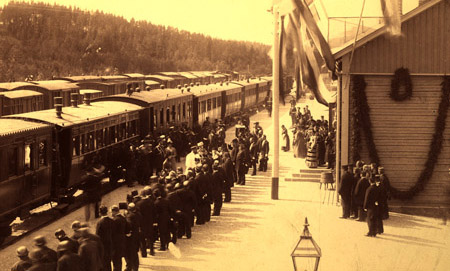The Imperial Train
When the Helsinki - St. Petersburg railway was built in the late 1860s, the Russian Tsar as the Grand Duke of Finland desired his own train for Finnish railway travel. None of the other Russian Imperial carriage stock could be used because the Finnish and Russian railway networks were not connected at St. Petersburg until a railway bridge spanning the River Neva was built as late as 1913.
The Finnish Imperial train had a rake of six carriages, three of which survive and are on display at the Museum, these being - the Tsar’s and Tsarina’s Saloons and a saloon car. These are the only surviving Russian Imperial vehicles from a fleet that once totalled almost one hundred. The Finnish Imperial carriages are owned by Finnish State Railways.
The Finnish Imperial carriages were constructed at different times. The Tsar’s Saloon and the dining car were the first to enter service in 1870, the kitchen car was completed in 1871, followed by the Tsarina’s Saloon and the saloon car in 1875. A utility van was later added to provide train heating. The train livery was dark blue with eagle crests in gold.
The dining car, kitchen car and heating van were utilised for other purposes long ago and no longer survive. The three surviving carriages entered the Finnish Railway Museum collection in 1923.
The Finnish Imperial Train only were only used on several occasions. It was first used in 1876 for Alexander II’s state visit to Helsinki, then twice by Alexander III when visiting Finland and Lappeenranta in 1885 and 1888. The final trip was in 1914 when the widowed Maria Feodorovna travelled via Finland from Tornio to St. Petersburg when fleeing from the outbreak of the First World War.



